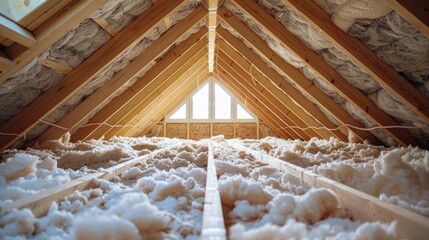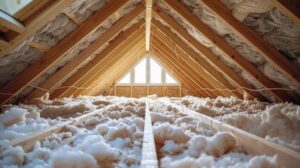Pests cause disease and damage crops, animals, buildings, and structures. They also spread allergens that can trigger asthma attacks and allergic reactions in people.
Identifying the pest helps you decide whether action is needed. Scouting and monitoring help you track pest populations so that you can take action at just the right time. Contact Pest Control Burnaby BC now!

Step 1: Learn about your pest.
Pest control is a complex matter involving preventative techniques in conjunction with targeted pesticide treatments. These techniques should be tailored to your situation, with an emphasis on environmentally friendly measures. A well-rounded approach to prevention includes thorough inspections and effective sealing of entry points, proper waste management, smart landscaping, and educational initiatives for building occupants.
In addition to their damaging impacts on property, some pests can spread diseases or trigger allergies and asthma. For example, cockroaches can contaminate food and trigger allergic reactions in humans. Some pests, such as fleas, ticks and wasps can also transmit parasitic diseases to people and pets.
The most effective way to prevent infestations is to implement Integrated Pest Management (IPM) strategies. IPM aims to reduce pest populations through a variety of methods, including habitat manipulation, cultural practices and the use of resistant varieties. In addition, the use of pesticides is based on monitoring data and restricted to sites where they are truly needed.
When pests are detected, they should be identified as quickly as possible. This will help you decide whether or not to take action and what actions should be taken. There are a number of different pest control techniques that can be used to reduce the risks from specific pests, such as trapping, baiting and fogging. Always read and follow the pesticide label’s instructions and safety warnings. Never mix different products and only apply chemicals where they are needed. Always use baits and traps in out-of-the-way places such as behind skirting boards, under sinks or in garages, and keep children and pets away from areas treated with pesticides.
Keeping properties clean and free of clutter is another important preventative measure that can significantly reduce the risk of pests. This will limit their food sources and breeding grounds and make it easier to trap and remove them. It is particularly important to store food waste in containers with tight-fitting lids. Clutter and overgrown gardens can provide shelter for pests, so it is important to keep garden beds and flowerbeds neat and trimmed.
Suppression
Pest control is a set of strategies for controlling undesirable organisms. This includes preventive measures such as pest proofing, and suppression techniques such as trapping and bait stations. The goal is to reduce the numbers of the pests to an acceptable level and to stop them from reproducing. Pests that are not controlled will grow to the point where they cause unacceptable damage and cost more to remove than they would have cost without the damage.
Some pests are merely an annoyance, but others pose a threat to human health and safety. They can spread disease (like cockroaches, rodents and fleas), contaminate food, damage buildings, spoil gardens and affect indoor air quality by droppings or stinging, as with bees, wasps and cluster flies. They may also look frightening or disgusting, as with spiders, silverfish and earwigs, or smell unpleasant, as with cockroaches, mice and bed bugs.
Natural features limit the growth of many pest populations, such as mountains or large bodies of water that restrict their access to food, water and shelter. Pests are usually only active as long as their food or water supply lasts, and when these resources dry up they die, overwinter or move on to another location.
There are a number of ways that the environment can be used to help keep pests at bay, including natural enemies, parasites and pathogens. These are often called biological pest controls. The classic form involves releasing the pest’s natural enemies into an area, either in small, repeated batches or in one big release. There is often a time lag between the increase in the pest population and the corresponding increase in the natural enemies that occur naturally in the area, so this type of control is usually considered a supplement to other methods of pest management.
Other environmental factors that can influence pest populations include temperature, moisture and the availability of food and shelter. Some plants can send distress signals that are interpreted by pests as invitations to dine, so it is important for growers to keep their crops healthy and free of disease and weeds. This can be accomplished with a variety of growing practices, including the use of crop rotation, mulching and shade cloth.
Eradication
Pests can cause damage to plants, buildings and structures that make them unusable. They may also transmit diseases. Examples of pests include flies that can carry and spread disease-causing bacteria, bees that can sting humans and damage property and ants that invade homes to eat food and destroy wood and other materials.
Some of the most effective methods for pest control are chemical. These solutions can kill or prevent a pest population from growing, and they typically work fast. Pesticides can be applied using sprays, baits or other techniques. When pesticides fail to control a pest, they may not have been correctly identified or applied at the right time. They may have also escaped the targeted area or been in a life cycle stage or location where they were not susceptible to the pesticide.
Another type of chemical pest control uses natural organisms to reduce or remove a specific species of pest. This involves introducing other insects or microorganisms that are natural predators or parasites of the pest to manage its population. Bacillus thuringiensis, commonly known as Bt, is one of the most popular microbial pesticides and has been developed to target specific insect infestations.
Biological pest control can be more complex than traditional chemical control techniques. It requires regular scouting and monitoring of the pest population, plant conditions and other factors that could impact the success or failure of the treatment.
Physical traps, netting and decoys can help keep pests away from residential or commercial properties. The use of pheromones or scent-based lures can also be effective in controlling pest populations. Physical controls require more frequent handling than other methods, but they are generally safe for the environment and people.
Eradication is a final level of pest control that eliminates a disease from a region or population. This means the disease no longer naturally occurs in that location, and any cases that occur are imported from other areas. Only two diseases have been eradicated: smallpox, caused by the Variola virus, and rinderpest, caused by the rinderpest virus. Eradication is an incredible feat that has been accomplished with the help of dedicated global campaigns.
Treatment
Pests can cause serious damage to our living and working environments. Some of the most common pests include rodents (rats and mice), cockroaches, fleas, bed bugs and mosquitoes. These pests can spread disease and contaminate food and food-preparation surfaces. They can also trigger asthma attacks and allergies in people. In addition, they can destroy crops and stored products, causing costly wastage.
The most important step in pest control is prevention, followed by suppression and then eradication. The goal of preventive techniques is to keep pests from getting into buildings or yards in the first place. This can be achieved by keeping the environment as unattractive as possible to pests, repairing cracks and crevices where they may enter, and keeping garbage in closed containers.
If pests do get into an area, the goal of the pest control program is to reduce their numbers to a level that is acceptable, with as little harm as possible to humans, pets and property. There are a number of ways to accomplish this, including traps and baits, sprays, fumigation, and the release of natural enemies such as parasites, predators or pathogens.
Keeping the environment as unattractive as possible is the best way to prevent pests from getting into your home or business. This includes removing sources of food, water and shelter. This can be done by storing food and trash in tightly sealed containers, disposing of rubbish regularly, and reducing clutter inside and outside buildings. It is also important to repair any leaky pipes or faucets, and close off places where pests might enter or hide.
If you do hire pest control services, ask them to find and correct the source of the problem before applying any chemicals. They should also be able to provide safety information about the chemicals they use, such as the Material Safety Data Sheet. Always follow the instructions carefully when using any pesticides, and make sure to use them correctly. For example, surface sprays should be used only in out-of-the-way areas such as along skirting boards and in corners, rather than on furniture that will be touched by family members or employees.


